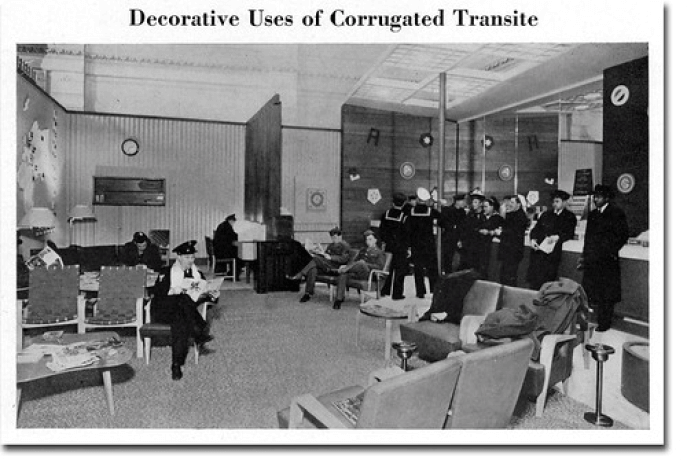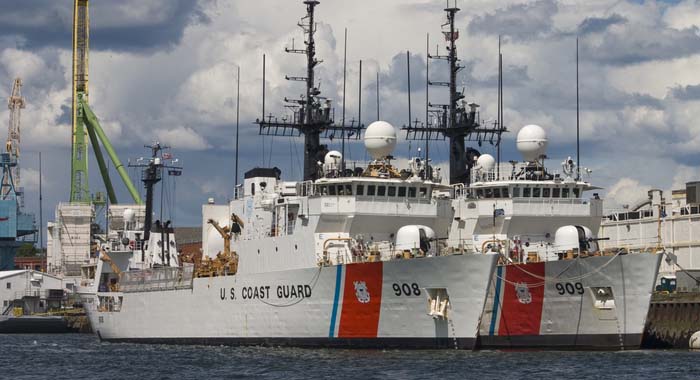Based on Your Reading:
Access Free VA Claims Assistance

Free Cancer Guide for Veterans

Find a Top Mesothelioma Doctor

U.S. Coast Guard veterans experienced as much asbestos exposure as Navy veterans, who have the highest risk of developing asbestos-related diseases of all the military branches. The Coast Guard is a tenth the size of the Navy, leading to a comparable rate of mesothelioma but fewer cases overall.

Written by Aaron Munz • Edited By Walter Pacheco • Veterans Review By Nathan Pinner
The Mesothelioma Center at Asbestos.com has provided patients and their loved ones the most updated and reliable information on mesothelioma and asbestos exposure since 2006.
Our team of Patient Advocates includes a medical doctor, a registered nurse, health services administrators, veterans, VA-accredited Claims Agents, an oncology patient navigator and hospice care expert. Their combined expertise means we help any mesothelioma patient or loved one through every step of their cancer journey.
More than 30 contributors, including mesothelioma doctors, survivors, health care professionals and other experts, have peer-reviewed our website and written unique research-driven articles to ensure you get the highest-quality medical and health information.
My family has only the highest compliment for the assistance and support that we received from The Mesothelioma Center. This is a staff of compassionate and knowledgeable individuals who respect what your family is experiencing and who go the extra mile to make an unfortunate diagnosis less stressful. Information and assistance were provided by The Mesothelioma Center at no cost to our family.LashawnMesothelioma patient’s daughter


Munz, A. (2024, April 17). Coast Guard Veterans. Asbestos.com. Retrieved April 19, 2024, from https://www.asbestos.com/veterans/coast-guard-veterans/
Munz, Aaron. "Coast Guard Veterans." Asbestos.com, 17 Apr 2024, https://www.asbestos.com/veterans/coast-guard-veterans/.
Munz, Aaron. "Coast Guard Veterans." Asbestos.com. Last modified April 17, 2024. https://www.asbestos.com/veterans/coast-guard-veterans/.
Coast Guard veterans can get treatment through the VA health system. The VA treatment centers in Boston, Los Angeles, Miami or Houston are served by top mesothelioma specialists.
Veterans with cancer caused by asbestos exposure that occurred during service qualify. Free VA cancer treatment as well as other special VA benefits are available.
Military asbestos exposure has come back to haunt many U.S. veterans after their retirement, including Coast Guard veterans.
Asbestos products are resistant to heat and corrosion, which made them useful for building ships and naval bases. Asbestos dust is highly toxic, however — a fact the U.S. government failed to acknowledge for many years.
Veterans exposed to asbestos a long time ago may be in danger of illnesses such as asbestosis, lung cancer, and mesothelioma.
If a Coast Guard veteran has cancer connected to their service, they and their family can get extra money each month. If the veteran passes away due to an illness connected to their service, then his or her spouse may be able to receive financial help.
Filing for VA benefits based on asbestos exposure is a complex process. The claimant must provide enough documentation to prove their military asbestos exposure.
An accredited VA claims agent from our Veterans Department can help you prepare a written asbestos exposure summary. They also help gather the necessary records for their VA claim.
Military families should also consider filing a legal claim to recover lost income. Compensation may cover caregiving expenses and other costs not covered by veteran benefits.
An experienced mesothelioma lawyer can advise you about filing a claim against the private companies that supplied asbestos products to the Coast Guard.
Access Free VA Claims Assistance

Free Cancer Guide for Veterans

Find a Top Mesothelioma Doctor

Coast Guard service members who served during World War II faced the highest risks of asbestos exposure. Many Coast Guard members worked in shipyards where the mineral was used to insulate and fireproof ships and boats. Other military branches encountered asbestos as well.
Veterans who served at the Curtis Bay Coast Guard Yard were at risk during shipbuilding and repair activities. Asbestos was also found in the barracks at the shipyard, known as Fleet Hall. Each of the building’s wings had a roof made from asbestos-containing shingles.
Mixing asbestos cement in poorly ventilated areas such as boiler rooms and engine rooms also created high levels of toxic dust. The Coast Guard used asbestos in vessels until the 1970s when the federal government began regulating its use.
In the 1970s, the Coast Guard and the National Cancer Institute collaborated on a study. It evaluated the mortality rate of marine inspectors between 1942 and 1970. A 2009 follow-up study published in Military Medicine extended the cohort by 14 years.
The studies found Coast Guard marine inspectors have a much higher mortality rate than other officers in the branch.
Marine inspectors sometimes had to go into ships and check out the cargo tanks and pump rooms. Unfortunately, these places can contain asbestos products which are very dangerous.
During WWII and the Cold War, Coast Guard Veterans were often exposed to asbestos while working on Liberty Ships. These ships contained a lot of asbestos in their pipes, ducts, insulation and heating systems.

In August 2020, a study was done to see why some military personnel, including Coast Guard members, passed away. This study looked at those who were involved in nuclear weapons tests between 1945 and 1962. The results showed that these people had a higher chance of getting mesothelioma if they served on U.S. naval vessels.
Coast Guard veterans may have been exposed to asbestos at their bases. Even though some military bases are now safer, many still have hazardous substances like asbestos or lead in them. In May 2020, the U.S. Defense Department’s Inspector General released a report on 38,000 military housing units containing hazardous substances including asbestos or lead.

Cutters, which are the largest ships in the Coast Guard, have large engine rooms that used to contain a variety of asbestos insulation and fireproofing materials. Coast Guard veterans assigned to these larger vessels may have been continuously exposed to asbestos.
Other large Coast Guard ships used asbestos in pipes, deck-coating materials and electrical wiring. Polar-class icebreaker ships are a prime example.

The Curtis Bay Coast Guard Yard is located southeast of Baltimore, Maryland. It was established in 1899 as a training academy and boat repair facility, and it began to operate as a shipbuilding and repair site by 1910.
For much of the 20th century, military personnel and civilians were exposed to asbestos at the Coast Guard Yard.
When the U.S. entered WWII, the Curtis Bay Coast Guard Yard was responsible for a high volume of vessel repair, overhaul and manufacturing activities. By the 1970s, the facility was heavily contaminated with toxic substances such as asbestos, PCBs, pesticides and dioxin.
In 2002, the U.S. Environmental Protection Agency designated the yard as a Superfund site.
The EPA signed an agreement with the Coast Guard in 2008 to clean the yard. In exchange, the Coast Guard had to identify environmental impacts associated with its past activities and then take the necessary actions to protect the community and the environment.
The Curtis Bay Coast Guard Yard now provides industrial support for the Coast Guard. This includes the design, construction, overhaul, repair and modification of ships.
In 2007, an Occupational & Environmental Medicine study analyzed 4,702 civilian workers who were employed at Curtis Bay between 1950 and 1964. Researchers found the workers had a higher mesothelioma mortality rate compared to the average population.
Workers employed at the shipyard for more than 10 years were roughly 33% more likely to die from mesothelioma than those employed less than 10 years.
“Employment in this Coast Guard shipyard revealed a small but significant excess mortality from all causes, lung cancer and mesothelioma, most of which is probably related to asbestos exposure,” the study concluded.
There is at least one known mesothelioma-related lawsuit involving the Curtis Bay Coast Guard Yard. In 2003, the estate of Harry Hunter sued Owens-Illinois Glass for providing Kaylo insulation, an asbestos product used at Curtis Bay.
Hunter, who died from mesothelioma in 2001, had worked as an electrician at Curtis Bay for 33 days during the summer of 1956 while he was in college.
The jury awarded Hunter’s estate $4.2 million for his wrongful death. The amount was later reduced because Maryland state law mandated a liability limit of $600,000.
Your web browser is no longer supported by Microsoft. Update your browser for more security, speed and compatibility.
If you are looking for mesothelioma support, please contact our Patient Advocates at (855) 404-4592
